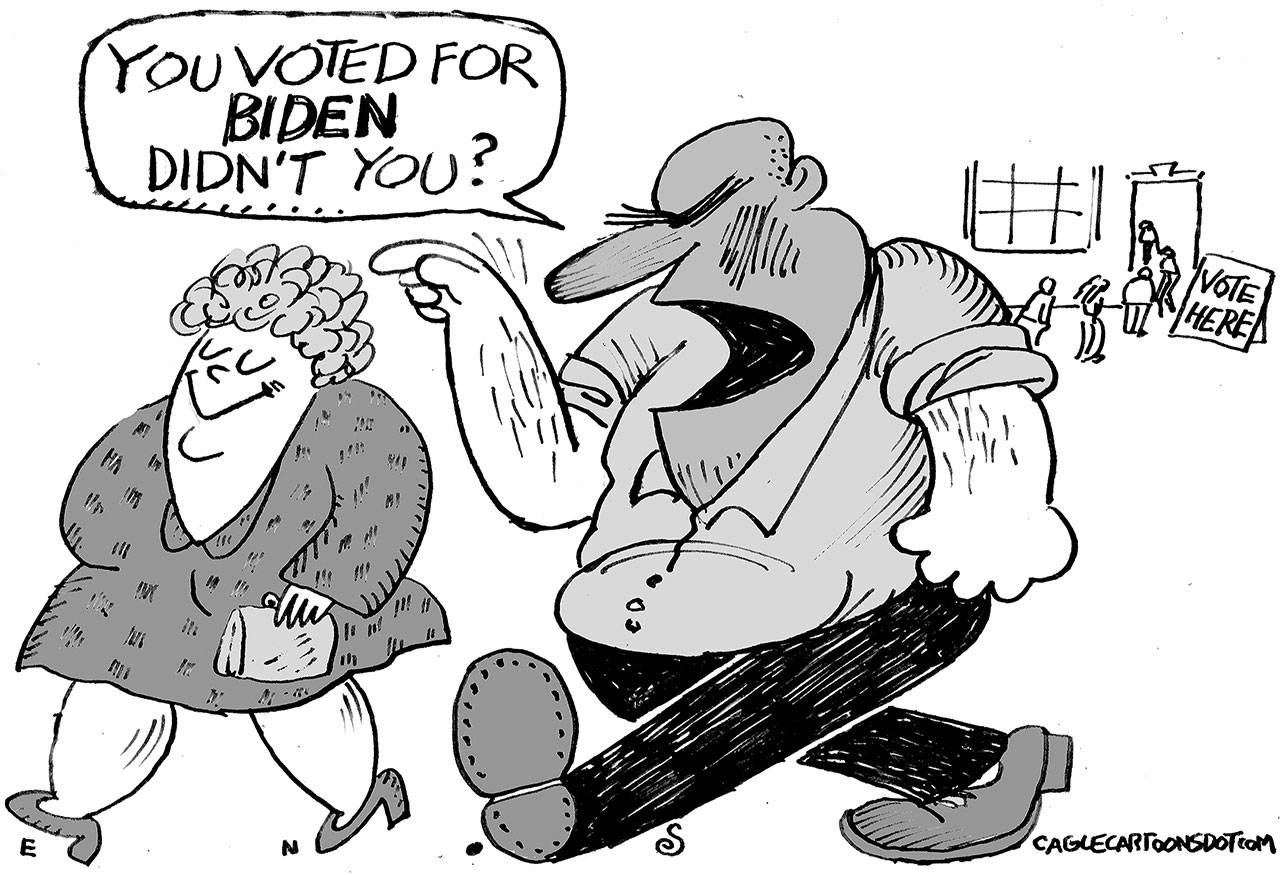In a little more than two weeks, Joe Biden may be president-elect. If the polls are correct, most voters are ready for a change from the wrecking-ball presidency of Donald Trump.
What kind of president will Biden be?
Will he be the Old Biden, a blandly moderate Democrat who spent decades in the Senate as an apostle of bipartisan compromise?
Or will it be a New Biden, the Democratic nominee whose ambitious, big-spending platform is the most progressive in his party’s history?
Biden has sought to fill both roles at the same time.
Since he won the Democratic nomination, he has campaigned mostly as a centrist, reassuring undecided voters that he’s not a socialist, no matter how often Trump says he is.
He’s made clear that he doesn’t support calls to “defund” the police, doesn’t endorse progressives’ Green New Deal and won’t ban the oil extraction method known as fracking.
At Thursday’s ABC News town hall event, Biden said his first act as president would be to meet with Republicans in Congress to try to resuscitate the bipartisanship he remembers from his 36 years in the Senate.
“With Trump out of the way … there’s going to be, I promise you, between four and eight Republican senators that are going to be willing to move,” Biden said, although he didn’t name any.
That’s the Old Biden speaking.
But look at his position papers and the platform Democrats adopted in August, and a different Biden comes into view: a candidate with plans ambitious enough to draw enthusiastic support from Sens. Bernie Sanders and Elizabeth Warren and other progressives who long viewed him with skepticism.
The Biden platform calls for more than $4 trillion in new federal spending. It begins with an immediate stimulus to help the economy weather the COVID-19 pandemic, then follows with massive proposals to combat climate change, rebuild infrastructure, reduce poverty, subsidize child care and provide universal pre-K education.
It’s roughly five times as large as the $787 billion stimulus package then-Vice President Biden managed for President Obama after the 2008 election, which followed a financial crash.
Biden and his advisers sometimes compare their proposals to President Franklin D. Roosevelt’s New Deal, which transformed and dramatically expanded the federal government during the Great Depression.
The sweeping series of proposals reflects a consensus among Democrats that didn’t exist when Obama and Biden were in the White House.
“The Democratic Party has moved to the left big time — not because of ideological arguments, but based on the facts of the case,” Biden adviser Jared Bernstein told me.
It’s not just a stratagem to unite Democrats for the duration of the campaign. It also reflects a conviction in Biden’s camp — heightened by the pandemic — that the economy needs to be restructured.
“The idea is to build an economic architecture that will make the economy more inclusive and better able to withstand shocks,” Bernstein said.
That’s where the analogy to FDR comes from: an economic crisis so vast that it not only demands federal action but also provides an opportunity for transformative change.
Like Biden, FDR was considered a charming but unoriginal establishment politician when he was elected in 1932. His campaign proposals to end the Depression were cautious, but the deepening crisis spurred him to do more.
FDR had one advantage: huge Democratic majorities in both houses of Congress that made it easy to pass ambitious legislation.
“Congress didn’t vote on the bills,” humorist Will Rogers said at the time. “They just wave at them as they go by.”
How much Biden can enact if he is elected will depend heavily on how his party does in House and Senate elections. Big wins will allow him to claim a mandate for big changes and will give him majorities to work with.
Hardly anyone but Biden expects the GOP to go along — and even Biden has said he won’t be surprised if few Republicans cooperate.
Republicans won their current majority in the Senate by waging all-out resistance to Obama’s programs. Any GOP senator who supports Biden’s plans will almost inevitably face a primary challenge from the right.
That won’t be Biden’s only challenge. Democrats, solidly behind him in the campaign, almost surely will disagree over how progressive — and how expensive — their legislation should be.
“It’s easier to be united when you’re all fighting against Trump,” Rep. Pramila Jayapal, D-Wash., co-chair of the Congressional Progressive Caucus, told me. “We know we’ll have to fight to keep these things (in the platform). Agreements can sometimes come apart.
“I knew we weren’t going to turn Joe Biden into Bernie Sanders,” she added.
So Act One of the Biden presidency, if he wins, will be a Democratic battle over how progressive his economic stimulus bill should be.
Act Two will be Biden’s effort to get at least a few Republicans to vote for it.
And Act Three, if the GOP turns him down, will be the new president’s battle to pass it over opposition resistance in the Senate.
By promising that his presidency won’t be as chaotic as the last four years, Biden has made bland normalcy into a virtue.
But that doesn’t mean there won’t be fireworks. In all likelihood, his presidency won’t be boring at all.
———
(c)2020 Los Angeles Times
Visit the Los Angeles Times at www.latimes.com
Distributed by Tribune Content Agency, LLC.


